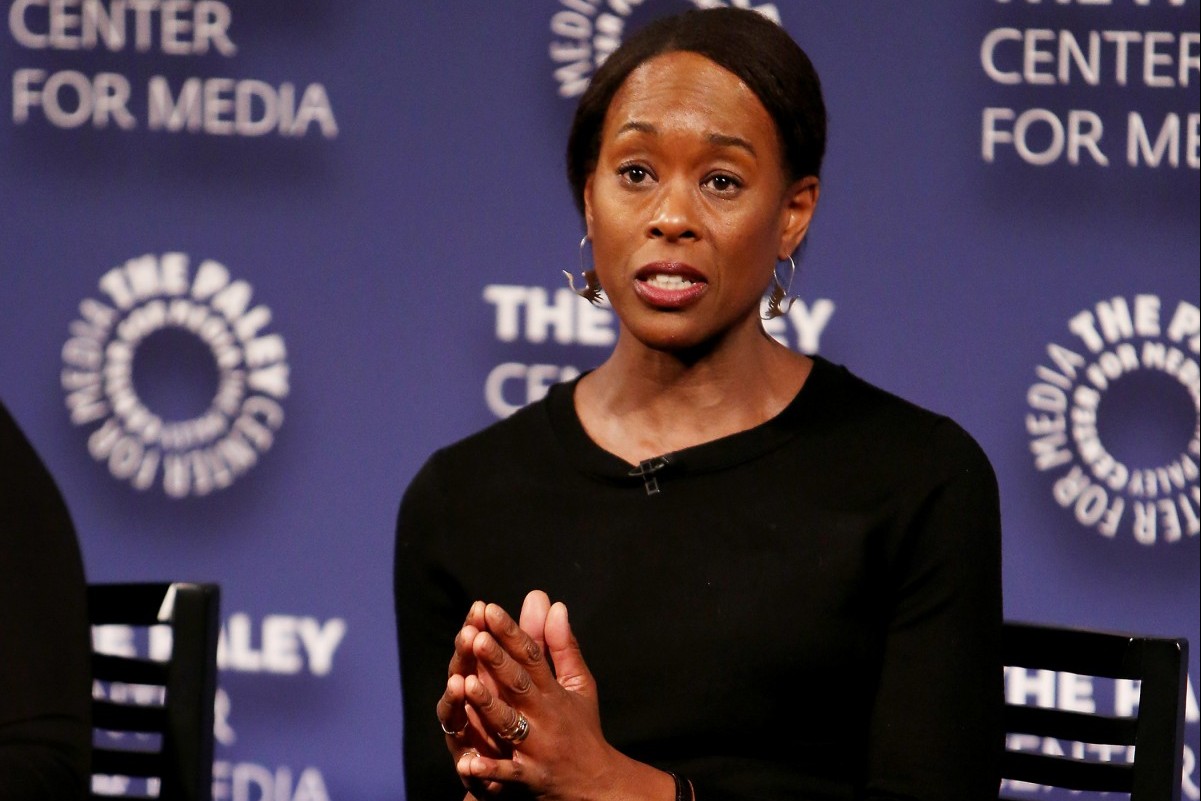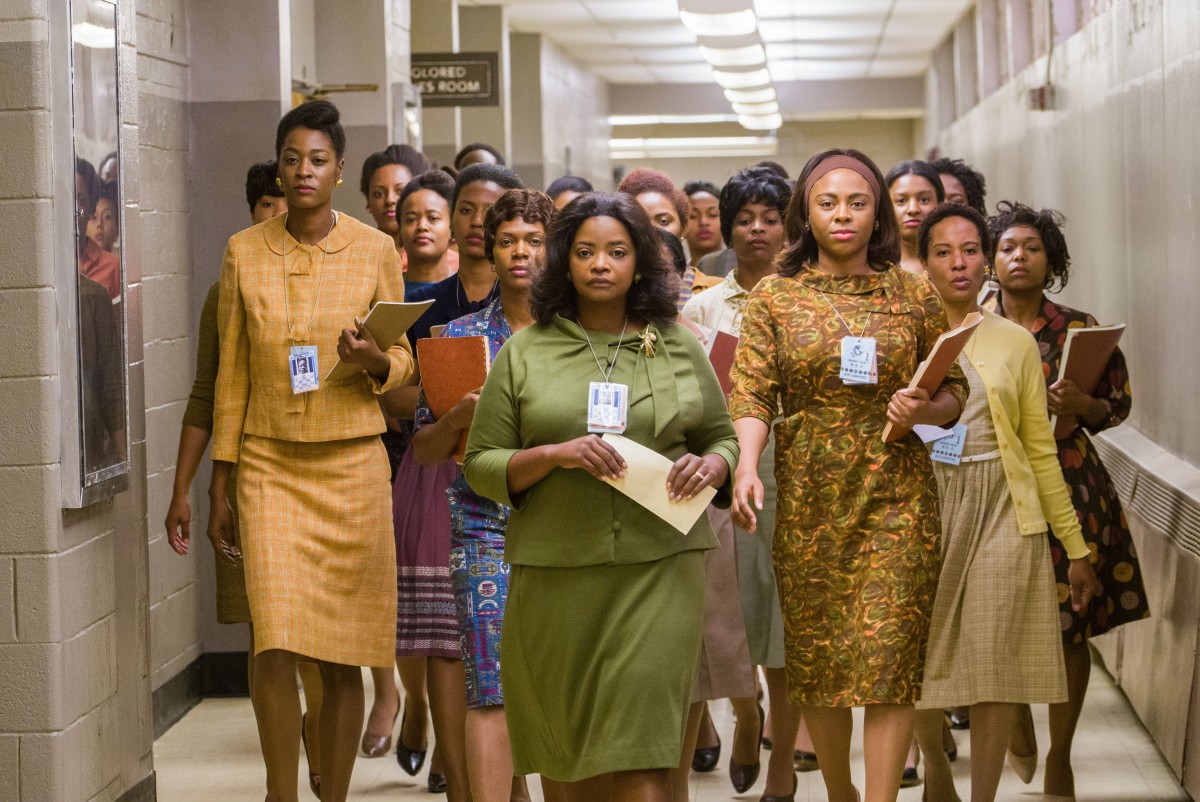Author Margot Lee Shetterly Says Hidden Figures Is Donald Trump’s History Too

‘Hidden Figures’ Author Margot Lee Shetterly Photo Provided
The untold story of Katherine Johnson, Dorothy Vaughn, and the other African American women who helped NASA win the Space Race is finally coming to light thanks to author Margot Lee Shetterly. Her book, Hidden Figures, explores how these unknown mathematicians played an integral role in helping America put a man on the moon. Their amazing tale is now heading to the big screen in the critically acclaimed film Hidden Figures, starring Taraji P. Henson, Octavia Spencer, Kristen Dunst, and Kevin Costner. Ahead, Shetterly explains why she wanted to bring this story to light and why it’s an inextricable part of Donald Trump and his supporters’ history.
What has the experience been like seeing your book transform into a film?
It’s been overwhelming. To have your first book published is a big deal, and I was thrilled with that. But then to have it made into a movie with like the best people in Hollywood is insane. I don’t even have a gauge to express how crazy that is, but I’m just so grateful. People read books and people cherish books—and I really hope that people cherish this book because the history is just so amazing—but more people see movies than read books. I think this means that the combination of the book and the movie, this history now really does get to be official history. These women, their contributions and the contributions, more broadly, of women in fields like this, they get to be part of the history books now.
Since the history books don’t often include many of the contributions by women and minorities, did you feel any pressure bringing this story to light?
My dad worked at NASA his whole career, he’s a research scientist. I knew a lot of black scientists, engineers, and mathematicians, and female mathematicians and engineers, women of all backgrounds. So this idea that anyone could be an engineer, a mathematician, or whatever, was something that I had grown up with and thought was really normal. In a lot of ways, I wanted to tell that story. A lot of times, when you have a story of minorities in America, it’s always this super, oppositional thing. It’s segregation, it’s the racism, and those are the hard facts of the story. You can’t tell the story without telling those things too… Often when these stories get told, the people who are in the stories aren’t always the protagonists of the stories. They’re the people to whom things happen. The racism happens to them, the discrimination. I wanted to tell the story of people that I knew, which was like, “Hey man, I’m going to work today and I’m going to come home and play with my kids.” In addition to those hard things, just show like normal black people. For me, it was important to normalize this experience and say, “Hey, this is just as much an American experience as any other thing that we see on the screen.”

Photo by Hopper Stone
Often the plight of African American women is lost during discussions of feminism and diversity. Do you hope this film encourages Hollywood to tell more authentic stories about strong African American women?
I do. I really do believe if we, whoever we is—in my case as a black woman from the South—it is my responsibility to tell this story. I see the story and my experience and I want my experience authentically represented. I feel like it is my responsibility to tell this story and to tell it in a way that rings true to me, and also tell it in a way that other people have access to it as well. For example, the first black professionals at NASA were women. Part of the reason why that story has been lost for so long is because they were women, not just because they were black. I think they were not seen because they were women. At the same time, the black women were segregated into a separate office. They had separate bathrooms and a separate cafeteria, so while they were part of the group of women and shared a lot with their white female colleagues, they also had this different set of conditions attached to them for being black. There are a lot of things in which the black women share with the black men, and there are a lot of things they share with the larger group of women. Within that intersecting circle is a set of experiences that are unique.
Considering the toxic political climate America finds itself in today, are there any actions that you think audience members can take to combat the hate and divisiveness after seeing Hidden Figures?
I went out to the southwestern part of Virginia, which is very rural, coal country, Trump country, whatever. I was invited by a friend who’s a writer from there to talk about Hidden Figures. I got an amazing reception. They bussed kids in from all over the place to come and see me talk about these women, and we talked about segregation. All white kids, all from this area that is right now top of mind because of the election results. I couldn’t have had a warmer welcome there. I feel like in a lot of ways, Hidden Figures is the book that I wrote and have been waiting to read since I learned to read. I really wanted somebody that looked like me, people like me, but great, sweeping American history. At the same time, this is Donald Trump’s history. This is the history of the people in southwest Virginia. I am not willing to let any of us off the hook for somehow allowing or encouraging them to participate in this history too. I don’t know how to do that. I think for me, going to speak in that particular part of my state and to be able to tell those kids about this little black girl from across the mountain (Katherine Johnson) who sent men to the moon. They see themselves in her. They’re white, she’s black, but they’re both these people from rural places. I think the story has that kind of power. I’m not letting anyone off the hook. This is American history. This is my history. This is everyone’s history. I am going to believe the best in people that they can see that. We have to extend ourselves to people we think are not like us.
Hidden Figures is now in theaters.
This interview has been edited and condensed.


